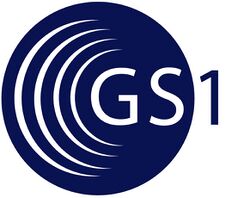GEPIR
The GS1 GEPIR (Global Electronic Party Information Registry) was a distributed database that contains basic information on over 1,000,000 companies in over 100 countries. The database could be searched by GTIN code (includes UPC and EAN-13 codes), container Code (SSCC), location number (GLN), and (in some countries) the company name. A SOAP webservice exists.
GEPIR had about 600.000 members in 72 countries.[1] In 2012 this increased to more than 1M members in more than 100 countries.[2] In 2013, all 111 member organisations joined GEPIR.
As of end December 2023, GEPIR was replaced by a new service called Verified by GS1.[3]
Accessibility
GEPIR is accessible for free in almost all countries but the number of request per day is limited (from 20 to 30). Since October 2013, GS1 France restricts access to GEPIR to companies (registration with SIREN code is required to use it).[4][5]
A premium access have been created by GS1 France in January 2010 [2] and allows companies to use GS1 web and SOAP interface without any limit.
System architecture
GEPIR is a lookup service coordinated by the GS1 GO that provides all end users with the ability to look up information about GS1 Identification Keys.[6]
Depending on the service, systems are provided by GS1 Member Organisations (MOs) or 3rd party service providers, or both. Where a GS1 MO does not choose to provide the service directly to its end users, the GS1 Global Office may provide the service for that geography. Some services involve a technical component deployed by the GS1 Global Office that coordinates the systems provided by GS1 MOs and/or 3rd party service providers. The GEPIR service is provided by systems deployed by GS1 MOs, with the GS1 GO providing a central point of coordination to federate the local systems. The GS1 GO also provides the MO-level service for MOs that cannot or do not wish to deploy their own system.
References
- ↑ "GS1 - Rechercher une publication". http://www.publications.gs1.fr/ressources/telecharger/2970/.
- ↑ 2.0 2.1 "Le blog de GS1 Partenaires: GEPIR, l'annuaire international des entreprises". http://www.gs1partenaires.fr/2012/10/gepir-lannuaire-international-des.html.
- ↑ "GEPIR transition to Verified by GS1". GS1. https://www.gs1.org/services/verified-by-gs1/gepir-transition/.
- ↑ "Accueil de Gepir France". http://gepir.gs1.fr/gepir_france/.
- ↑ "Who is hiding behind the barcode? - Open Product Data". 16 October 2013. http://product.okfn.org/2013/10/16/who-is-hiding-behind-the-barcode/.
- ↑ http://www.gs1.org/docs/gsmp/architecture/GS1_System_Architecture.pdf The GS1 System Architecture 2013
External links
- GEPIR GO (Global Office) - Webpage (Worldwide)
- Verified by GS1 - Search service
 |


